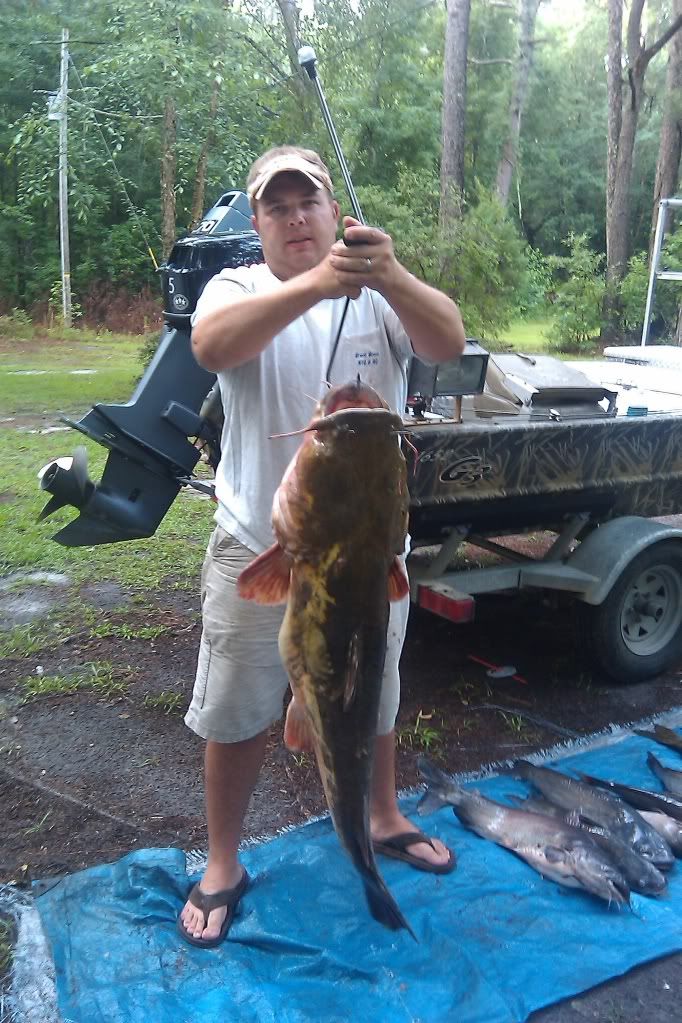Here’s the first part of the Texas story:
Beginning Sept. 1, Texas bowfishers will join their colleagues in 10 other Southern states in having the opportunity to catch catfish with arrows in addition to targeting the half-dozen or so non-game fish typically pursued by the aquatic archers.
After discussion over two days, the Texas Parks and Wildlife Commission voted 5-3 on Thursday to allow bowfishing for catfish for one year ending Aug. 31, 2007.
Currently, catfish are classified as a game fish. Texas law prohibits taking of any game fish with bow and arrow.
Recommendation rejected
The vote to allow bowfishing for catfish was a rare rejection by the commission of a Texas Parks and Wildlife Department staff recommendation. The agency’s inland fisheries staff told the commission it was not in favor of making catfish legal game for bowfishers.
The issue had been forced by a petition for rulemaking from a bowfishing organization that wanted the opportunity to take catfish as well as the carp, gar, buffalo and other non-game fish targeted by bowfishers.
The inland fisheries staff said the agency didn’t know what, if any, impact allowing bowfishing for catfish would have. The agency doesn’t know how many people bowfish in Texas waters, where they fish or how many catfish they are likely to take.
But allowing a game fish to be taken by lethal means would be a step backward in the agency’s efforts to promote “selective harvest,” giving anglers the choice to retain and kill a fish or release it.
Catfish are the second-most popular freshwater game fish in the state, and about 300,000 Texas anglers target them. State officials are encouraging development of a catfishing ethic much like that seen among bass fishermen. Many anglers release most of the bass they land.
“We’re trying to increase the recreational value of catfish,” said Phil Durocher, director of TPWD’s inland fisheries division. “I’d be afraid (allowing bowfishing for catfish) would devalue catfish.”
Opponents of adding catfish as bow targets voiced concern that the move could put the state on a slippery slope.
They fear it might lead to pushes to legalize bowfishing for other game fish species such as redfish and largemouth bass. Representatives of the Coastal Conservation Association and the Sportsman Conservation-
ists of Texas told the panel that their organizations opposed allowing bowfishing for catfish. They cited the precedent it would set if there are pushes to allow bowfishing for other game fish.
Public comment on the proposal ran 3-to-1 in opposition to allowing bowfishing for catfish. Supporters of allowing bowfishing for catfish countered that there is no evidence bowfishers hurt catfish fisheries.
“Ninety-nine percent of the fish we see are non-game fish,” Tim McKee of the Texas Bowfishing Association told the commission.
Bowfishers would like the opportunity to take the occasional catfish, McKee said, because they, like other anglers, often like to eat fish.
“We just want a piece of the pie. That’s all,” McKee said.
Bowfishers, estimated to number no more than a few hundred across the state, would take few catfish, supporters said. And they would operate under the same rules — bag limits and minimum length requirements — as hook-and-line anglers.
The worry that taking a catfish with a bow and arrow violates the status given to designated game fish holds no water, supporters said.
Catfish have several asterisks beside them in the regulations. They are the only game fish allowed to be taken on trotlines, set lines or jug lines. And, catfish are the only game fish that can be taken from public water and commercially sold.
No problem seen
Commission member Phil Montgomery of Dallas supported allowing bowfishing for catfish.
“Part of our mission is to expand hunting and fishing opportunities,” Montgomery said. “Since this is not a (natural) resource issue — there’s no evidence bowfishing depletes catfish populations — I don’t see a problem.”
The commission will revisit the issue in a year and decide whether to renew the rule allowing bowfishers to take catfish or allowing the regulation to expire.






